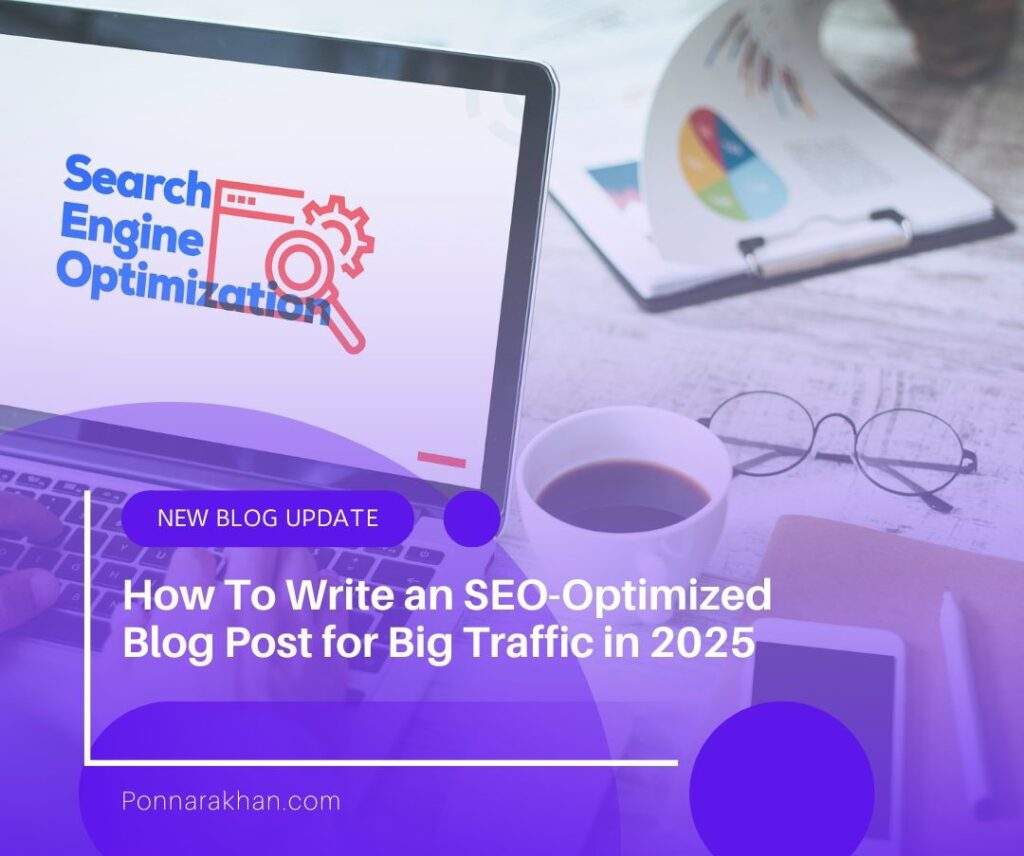If You’re Running a Blog, You Can’t Just Write Whatever You Want (If You Want Traffic).
When you’re running a blog, it’s important to understand that blogging isn’t just about writing whatever comes to mind. No matter what niche you’re in, there are thousands of people searching for content like yours on Google every day. But if your content isn’t optimized to rank well on search engines like Google or Yahoo, most people simply won’t find it.
In this article, I’ll walk you through a step-by-step process for writing SEO-friendly blog posts that rank higher in search engines and attract a lot more traffic.
Step 1: Research Long-Tail Keywords for Your Blog Post
Before you start writing, the first thing you need to do is identify a seed keyword—the main topic of your post. For example, if your blog is about dogs, a topic like “dog training” might be your seed keyword.
But don’t just start writing about dog training right away. Instead, do some keyword research to find long-tail keywords related to your topic—these are longer, more specific phrases that people are actively searching for. You can use free and paid tools like Ubersuggest, SEMrush, KeywordTool.io, Keyword Surfer (Chrome extension), or Soovle to help with this.
Let’s say you find long-tail keywords like:
- “crate training a puppy at night”
- “how to stop a dog from digging”
- “how to stop a dog from chewing furniture”
Pick one that has decent search volume and low competition. That’s the keyword you’ll focus on in your article.
Step 2: Use the Keyword in Your Title and Subheadings
Once you’ve chosen your long-tail keyword, include it in your article’s main title and at least one or two subheadings. For example, if your keyword is “how to stop a dog from chewing furniture”, you might write a headline like:
- “5 Proven Tips on How to Stop a Dog from Chewing Furniture”
- “How to Stop a Dog from Chewing Furniture at Home—For Good”
You can tweak the phrasing a bit, but make sure to keep the full keyword intact. For subheadings, try to use the keyword naturally—don’t force it if it makes the language sound awkward.
Step 3: Use the Keyword Naturally Throughout the Content
Now that you have your keyword, sprinkle it throughout your article in a natural way. Here’s a good structure to follow:
- Include the keyword once or twice in the introduction.
- Use it two to three times in the body of your content, spacing it out so it doesn’t feel repetitive.
- Mention it once in the conclusion.
Above all, focus on making your writing sound natural and easy to read. Don’t stuff your keyword in just for the sake of SEO—it can hurt more than help.
Step 4: Focus on Providing Real Value
In digital marketing, content is still king—and that’s because search engines evaluate the value of your content based on how users interact with it. The longer someone stays on your page and engages with your content, the more search engines see it as valuable.
To stand out, your content should be original, ideally written in your own words—even if the ideas come from tools like ChatGPT. Make sure it’s clearly written, thoroughly proofread, and reflects your own perspective or voice. In today’s highly competitive content landscape, your unique style and genuine insights are what will set you apart.
Remember, your content doesn’t have to be perfect—it just needs to be authentic, helpful, and written in your own tone.
Step 5: Interlink Your Blog Posts
Another important part of writing a strong blog post is internal linking—connecting your new post to other relevant articles on your blog.
Internal links help search engines understand that your content is comprehensive, connected, and valuable within your niche. They also improve user experience by guiding readers to explore more related content on your site. This not only increases time spent on your blog but also improves your site’s SEO overall.
To interlink effectively, use clickable text (anchor text) with relevant keywords that naturally lead to other blog posts. Internal linking is a powerful ranking signal that you should never ignore.
Step 6: Optimize Meta Description, Tags, and Images
If you’re using WordPress and haven’t installed an SEO plugin yet, now’s the time. Plugins like Yoast SEO, All in One SEO, or Rank Math are free and offer everything you need to optimize your content. Only install one plugin, as they perform similar functions and can conflict with each other.
These tools help you analyze your article and offer suggestions to boost your SEO score. But for now, we’ll focus on using them to write a meta description.
A meta description is a short summary of your article that appears in search results. Instead of letting search engines pull a random snippet from your content, you can write a custom meta description that highlights the key points of your article. Be sure to include your target keyword once in the description.
In the tags section, add your main keyword first, followed by a few shorter, related keyword phrases (usually 1–2 words each).
For any images you include in your post, rename the files to include your target keyword or a related phrase before uploading them. This helps boost your article’s visibility in Google Image Search and supports your overall SEO strategy.
Step 7: Build Backlinks Outside Your Blog
The final step involves off-site SEO—creating backlinks from external sources to your blog post.
The simplest and fastest way to start is by sharing your post’s link on your social media profiles. Beyond that, you can build more backlinks by:
- Writing guest posts on other blogs in your niche
- Sharing your content on forums or communities relevant to your topic
- Commenting on other blog posts with a link back to your article (when appropriate)
You don’t need to build hundreds of backlinks right away. In fact, creating too many at once can look suspicious to search engines and hurt your rankings. Instead, focus on building backlinks organically and gradually over time.
Final Thoughts
As a blogger, understanding the basics of search engine optimization (SEO) is essential if you want your articles to reach a wider audience. By combining SEO best practices with your own creativity, personality, and valuable insights, you can write content that not only ranks well but truly helps your readers.
Follow the steps above to properly target keywords, structure your content for both search engines and readers, and steadily grow your blog’s traffic.

I’m Cambodian, and I enjoy sharing my thoughts and experiences here on this blog. I love writing about my life journey and the lessons I learn along the way. I’m especially passionate about topics like self-improvement, motivation, and developing a success-driven mindset.
You’ll also find helpful articles where I explore different ways to build an online business — including blogging, digital marketing, affiliate marketing, and financial trading.


